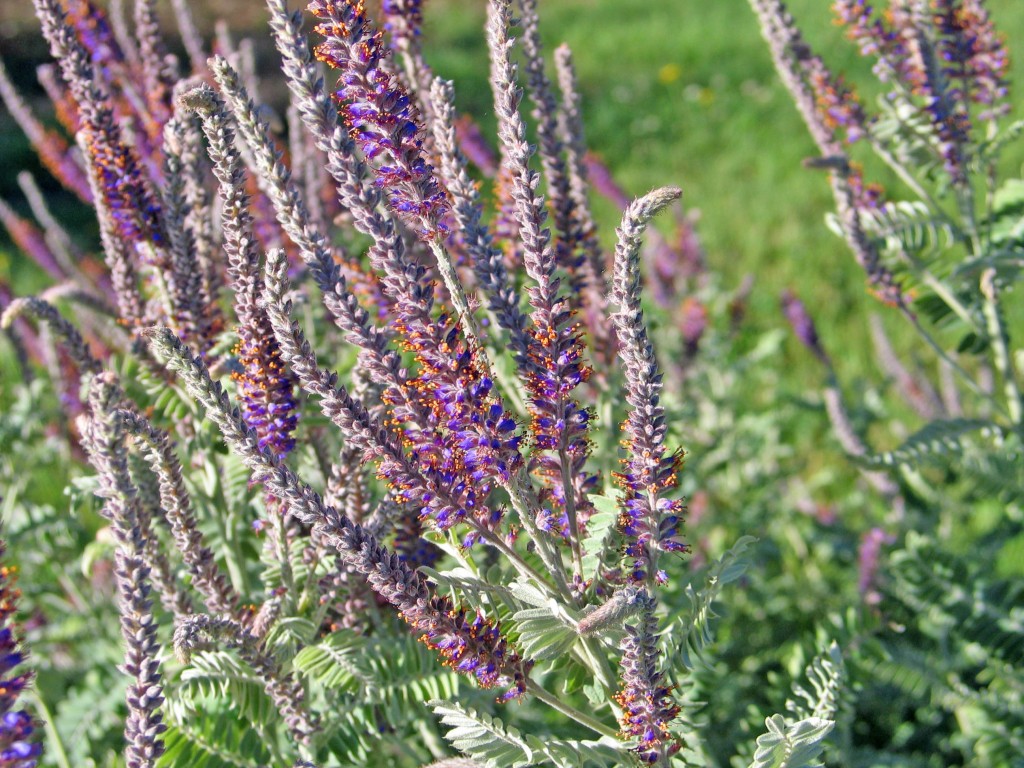Fall is often overlooked as a key planting time for a beautiful garden. It’s such a good time to give your plants a little attention before winter sets in. Take advantage of fall’s cooler weather to dig in your yard and add a few plants. With warm days and cooler nights, I actually prefer to establish plants after the heat of summer has passed. Here is a handy list of items I like to plant in the fall:
Shrubs
With warm soil temperatures persisting well into October, adding a few shrubs to your landscape is one of the easiest tasks to do. Whether evergreen or deciduous, fall planted shrubs will continue to root as long as the soil is not frozen. Select healthy, actively growing shrubs and always plant at or slightly above the natural soil line. These newly planted shrubs will benefit from regular watering through the fall until the ground freezes. Mulching appropriately stabilizes the soil temperatures to keep newly established plants rooting until winter dormancy.

Trees
Fall is a perfect time for tree planting. With an increase in rainfall and cooler temperatures, you will need less water to get the trees established. Tree growth stops as the days get shorter, but warm soil and consistently cooler weather help spur on new root growth. These new roots will develop as long as the soil is not frozen. Trees planted in the fall are better equipped to deal with heat and drought in the following season because they have a more established root system. Fall is also a great time to pick trees by the fall they produce. Steps to planting a tree.

Perennials
Time and again we have seen the benefits of planting perennials in the fall here at the Arboretum. We usually have more time to focus on getting them established, too. Fall planted perennials such as wildflowers and even native grasses are more robust and vigorous the following year. It’s true, we don’t always feel like gardening this time of year, but the reward is worth the extra effort. Here is a short list of perennials for fall plating:
Wildflowers
- Black-eyed susan
- Coneflower
- Blazing star
- Asters
- Penstemon
- Primrose
- False Indigo
- Blue Star
- Yarrow
- Milkweed
Grasses
- Little bluestem
- Big bluestem
- Indiangrass
- Prairie dropseed
- Switchgrass
As you can see, just about any perennial can be planted in the fall. Establish them as you do in the spring with daily watering for the first few weeks depending on the weather. Back off on watering as you see new growth.
During the winter, check the new plants monthly and water them if the top inch or two is dry. The biggest issue with fall establishment is that the plants get too dry during the winter. Desiccation/neglect can be a real drawback of fall planting. I have done this myself by thinking “Oh, the plants are dormant, so they don’t need to be watered.” Don’t forget to check them through the winter!

Bulbs and Cool Season Grass
Fall is a great time to plant a few spring blooming bulbs. Order or pick up quality bulbs and plant them to the suggested depth. I love daffodils, but species tulips, grape hyacinth and ornamental onions are nice additions to the garden.
August and September are great times to establish cool season turf like fescue. Make sure you buy seed that is free of weeds and other crop seed.
While most gardeners are more accustomed to planting in spring, fall is also an ideal time to get a variety of plants established in your garden. Don’t let garden fatigue keep you from getting your landscape ready for next year. Working in the garden in fall makes good sense both now and for next spring. Come to our fall FloraKansas Native Plant Festival for more information and options for fall planting.
